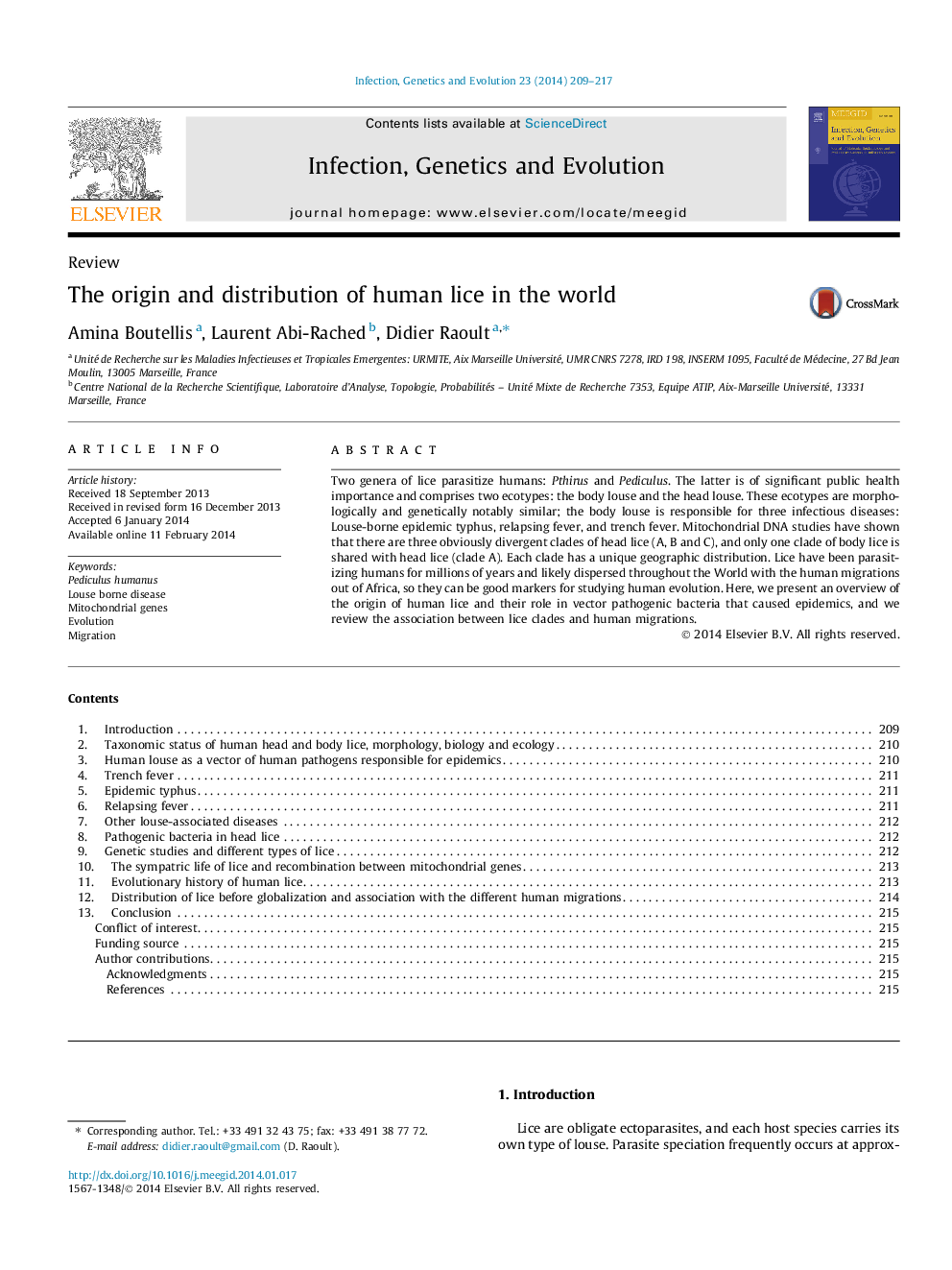| Article ID | Journal | Published Year | Pages | File Type |
|---|---|---|---|---|
| 5909884 | Infection, Genetics and Evolution | 2014 | 9 Pages |
Abstract
Two genera of lice parasitize humans: Pthirus and Pediculus. The latter is of significant public health importance and comprises two ecotypes: the body louse and the head louse. These ecotypes are morphologically and genetically notably similar; the body louse is responsible for three infectious diseases: Louse-borne epidemic typhus, relapsing fever, and trench fever. Mitochondrial DNA studies have shown that there are three obviously divergent clades of head lice (A, B and C), and only one clade of body lice is shared with head lice (clade A). Each clade has a unique geographic distribution. Lice have been parasitizing humans for millions of years and likely dispersed throughout the World with the human migrations out of Africa, so they can be good markers for studying human evolution. Here, we present an overview of the origin of human lice and their role in vector pathogenic bacteria that caused epidemics, and we review the association between lice clades and human migrations.
Related Topics
Life Sciences
Agricultural and Biological Sciences
Ecology, Evolution, Behavior and Systematics
Authors
Amina Boutellis, Laurent Abi-Rached, Didier Raoult,
